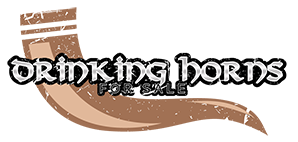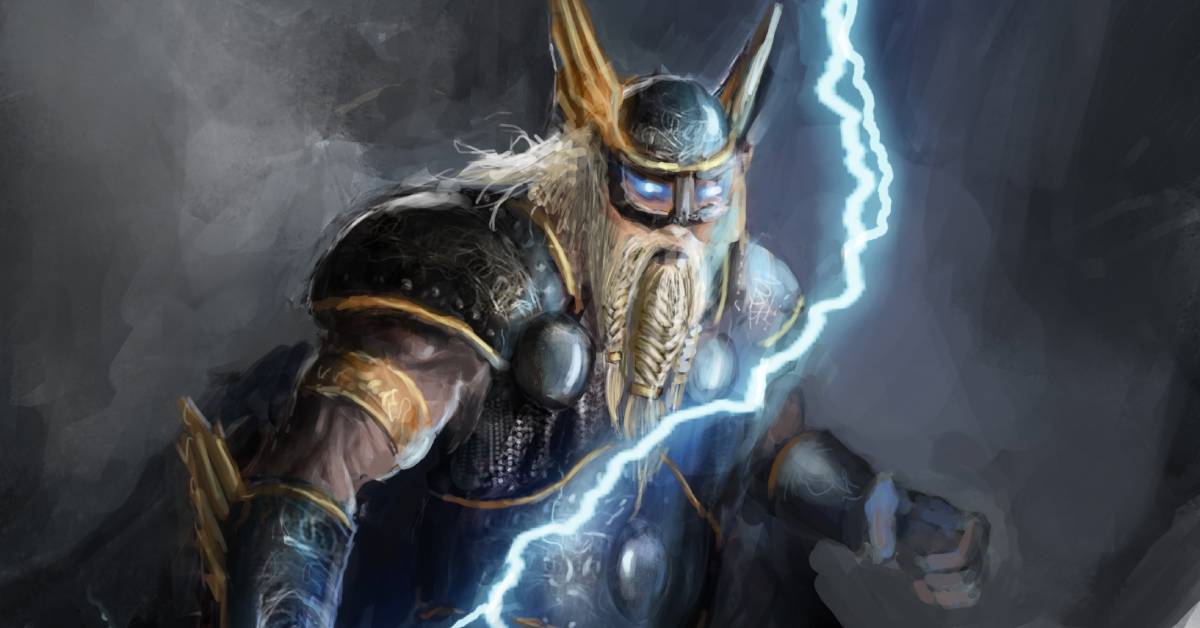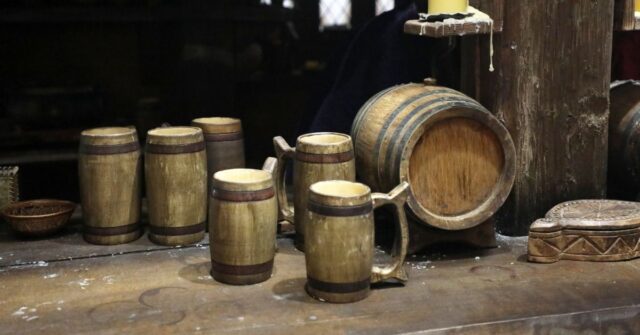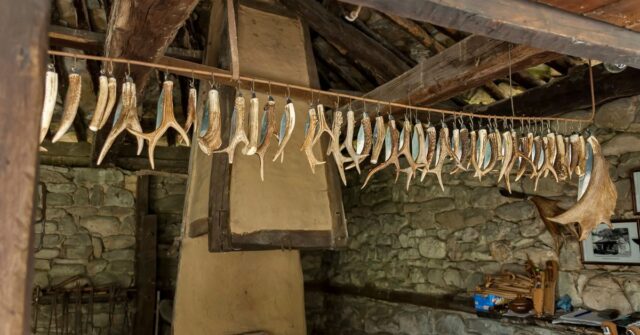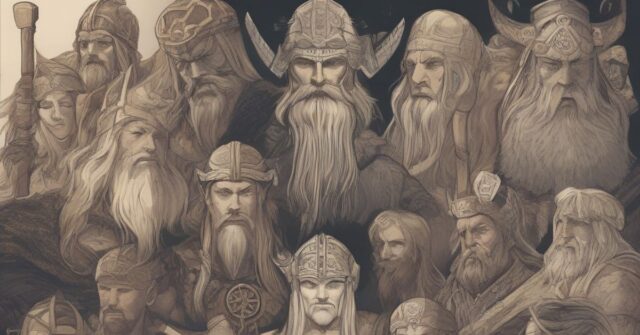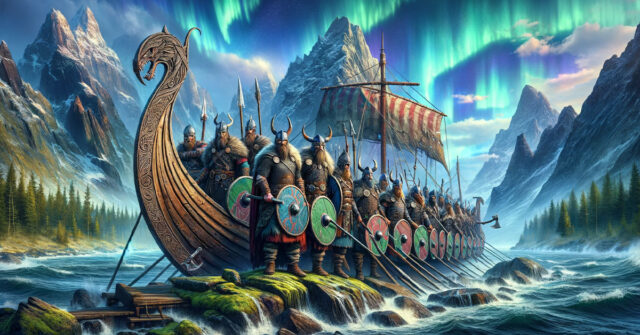Delving into the past, Norse mythology provides an expansive vista of legendary gods, mythical creatures, and captivating tales that depict the valor, cunning, and brotherhood of ancient civilizations.
In this article, we will explore these fascinating stories and the significance of prominent symbols such as drinking horns in Norse society.
The Origin of Norse Mythology
Long before the advent of Christianity in Scandinavia, the Norse people had a rich and complex system of beliefs and tales about the universe, its creation, and the gods who ruled it.
These stories handed down orally from generation to generation, form what we know today as Norse mythology.
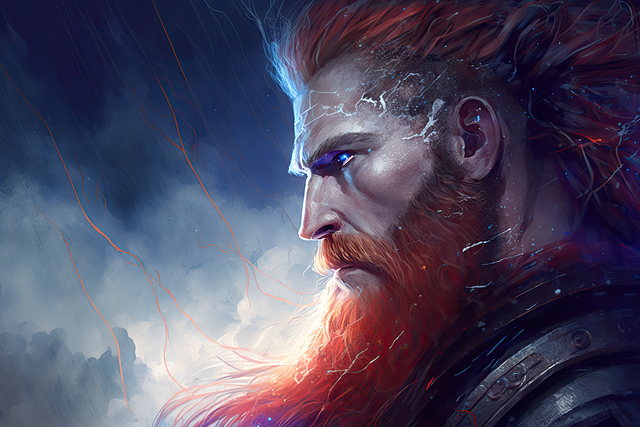
The Cosmogony of the Norse World
Norse cosmogony, or the birth of the universe, is a fascinating subject. In the beginning, there were two worlds: Muspelheim, the world of fire, and Niflheim, the world of ice.
In the gap between them, the frost and the flames met and gave birth to the giant Ymir, from whom the world was formed.
Historical Context and Influences
Norse mythology, like many other belief systems, was influenced by the natural environment, cultural interactions, and historical events of the time.
It was a way for the Norse people to understand the world around them, make sense of natural phenomena, and give meaning to their existence and experiences.
The Pantheon of Norse Gods
Central to Norse mythology is a pantheon of deities, each with their own distinct personalities, roles, and stories.
These gods are divided into two main groups, the Aesir and the Vanir, and each has unique and intriguing tales associated with them.
Aesir: The Primary Norse Gods
The Aesir are the primary gods in Norse mythology, associated with war, wisdom, and power. They reside in Asgard, one of the nine realms in the Norse cosmology.
Odin: The Allfather
Odin, often known as the Allfather, is the chief of the Aesir gods. Known for his wisdom and sacrifice, Odin is the god of war, poetry, and magic.
He is renowned for his quest for knowledge, even sacrificing his eye to drink from the Well of Wisdom.
Thor: The Thunder God
Thor, the god of thunder and the protector of mankind is arguably the most popular figure in Norse mythology.
Known for his mighty hammer Mjölnir, Thor’s tales are filled with heroic deeds fighting giants and other creatures threatening Asgard and Midgard (Earth).
Freya: The Goddess of Love and War
Freya is the Norse goddess of love, beauty, fertility, and war. She is known for her enchanting beauty and is also a fierce warrior and leader of the Valkyries.
Her chariot, drawn by two cats, is one of the many vivid images in Norse mythology.
Loki: The Trickster
Loki, the trickster god, is a complex character in Norse mythology. Known for his cunning and deceptive nature, Loki often creates problems for the gods but also helps them with unusual solutions.
His role in the myth of Ragnarok, the end of the world, is particularly significant.
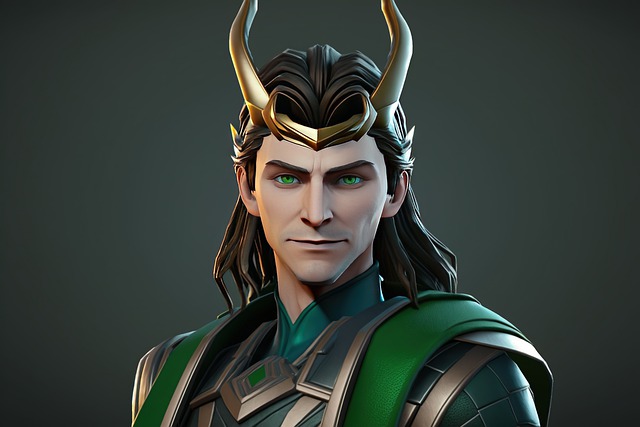
Vanir: The Fertility Gods
The Vanir are a group of gods associated with fertility, prosperity, and wealth. In early Norse mythology, they were often at odds with the Aesir, leading to the Aesir-Vanir war.
However, they eventually reconciled, leading to an exchange of gods that further enriched Norse tales.
Njord: God of the Sea
Njord is the Vanir god associated with the sea, wind, and wealth. He symbolizes successful voyages and bountiful harvests. Njord is often depicted as a peaceful deity, in stark contrast to many of the warlike Aesir.
Freyr: God of Prosperity
Freyr is another prominent figure among the Vanir, associated with prosperity, good weather, and fertility. He is often depicted with a golden boar and a ship, symbolizing prosperity and bounty.
Freyja: Goddess of Love and Fertility
Not to be confused with the Aesir goddess Freya, Freyja is a Vanir goddess associated with love, beauty, and fertility, as well as wealth and war. She possesses a cloak of falcon feathers that allows her to fly between worlds.
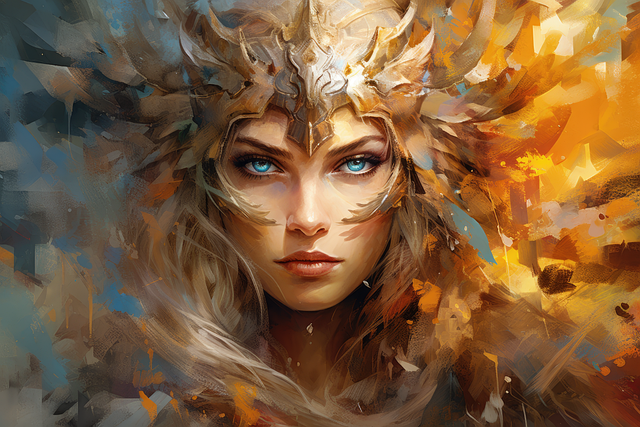
Mythical Creatures in Norse Mythology
Aside from gods and goddesses, Norse mythology is teeming with an array of mythical creatures, each with its own tales and symbolism.
From serpents encircling the world to great wolves destined to devour the sun and moon, these creatures add another layer of depth and intrigue to the mythology.
The World Serpent: Jormungandr
Jormungandr, also known as the World Serpent, is a gargantuan sea serpent destined to play a crucial role in Ragnarok.
According to the legends, Jormungandr was thrown into the great ocean surrounding Midgard by Odin, where it grew so large that it could encircle the world and grasp its own tail.
Fenrir: The Great Wolf
Fenrir, the monstrous wolf, is another significant creature in Norse mythology.
Born of Loki and the giantess Angrboda, Fenrir grew so large and powerful that the gods had to bind him in magical chains, a task that cost the god Tyr his hand.
Dragons and Dwarfs
Norse mythology also tells tales of fearsome dragons and industrious dwarfs.
Dragons, such as Fafnir, were seen as symbols of greed and destruction, while dwarfs were known for their craftsmanship, creating some of the most powerful and magical items in the Norse cosmos.
The Norns: The Fates of Norse Mythology
The Norns are three divine beings who control the fate of all beings in the Norse universe. They spin the threads of life, determining the destiny of gods and men alike.
Their decisions, inscrutable and irreversible, profoundly affect the course of events in the mythology.
Important Norse Myths
Norse mythology is filled with epic narratives that recount the creation of the world, the deeds of gods and heroes, and the ultimate destiny of all things.
These tales, rich in symbolism and moral lessons, have profoundly influenced later cultures and literary works.
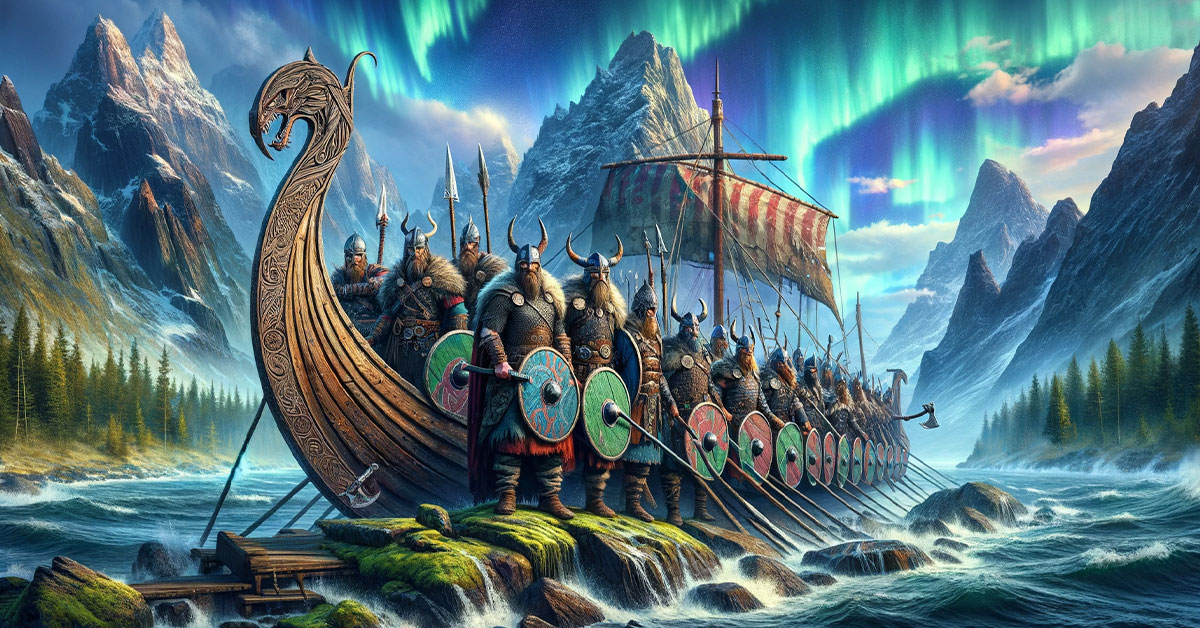
The Creation of the World: Yggdrasil and the Nine Realms
The Norse creation myth tells of Yggdrasil, the world tree, that holds the Nine Realms within its branches and roots.
These realms include the lands of the gods, giants, dwarfs, and humans, all interconnected in a complex web of relationships and conflicts.
The Myth of Ragnarok: The End of the World
Ragnarok, often referred to as the “Doom of the Gods,” is the apocalypse in Norse mythology.
This cataclysmic event foretells a great battle, natural disasters, and the death of many major gods, resulting in the submersion of the world in water.
However, it’s also a story of rebirth and renewal, as the world is said to resurface anew, ready for the surviving gods and humans to start again.
Thor’s Journey to Utgard
One of the most famous tales in Norse mythology is Thor’s journey to the land of the giants, Utgard. This story, filled with magic, trickery, and the might of Thor, highlights the cunning of the giants and the limitations of brute strength.
The Binding of Fenrir
The tale of the binding of Fenrir is a story fraught with prophecy and sacrifice.
Foretold to cause great harm to the gods at Ragnarok, the wolf Fenrir is tricked and bound by the gods, a preventative act that nonetheless sets the stage for the prophesied end of the world.
The Role of Drinking Horns in Norse Society
Drinking horns hold significant symbolic and practical value in Norse culture.
They were more than mere vessels for consuming beverages; they were emblems of status, means of forming and honoring bonds, and instruments in ritual practices.
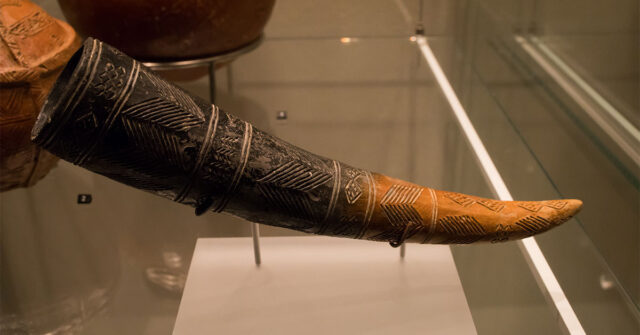
Symbol of Power and Brotherhood
Drinking horns were often used in ceremonial contexts, symbolizing the power and camaraderie of those who used them.
They were common in feasts and celebratory occasions, signifying brotherhood and unity among participants.
Drinking Horns in Rituals and Feasts
Drinking horns also played a vital role in religious rituals and sacred feasts, often being used in toasts to the gods. These toasts could be offered for victory in upcoming battles, good harvests, or simply in honor of the gods.
Mythological Tales Involving Drinking Horns
There are several Norse myths involving drinking horns. One such tale recounts how Odin, in the guise of a traveler, drinks from a horn that unknowingly drains the sea, impressing his giant host.
These stories underline the symbolism and cultural importance of drinking horns in Norse society.
Legacy of Norse Mythology
The influence of Norse mythology extends far beyond the Viking Age, leaving an indelible imprint on Western literature, art, and popular culture.
From epic sagas to modern films, these ancient tales continue to resonate with audiences, offering timeless insights into human nature and our place in the universe.
Impact on Literature
Norse mythology has greatly impacted global literature.
From the ancient sagas to modern fantasy novels, the themes, characters, and narratives of Norse mythology have provided rich material for writers throughout the centuries.
The Prose Edda and the Poetic Edda
The Prose Edda and the Poetic Edda are two of the most important sources of Norse mythology.
Composed in the 13th century, these works compile a wide range of Norse myths and heroic legends, providing invaluable insights into the beliefs, values, and storytelling traditions of the Norse people.
Norse Mythology in Modern Literature
The influence of Norse mythology is evident in modern literature as well, particularly in the fantasy genre. Authors such as J.R.R.
Tolkien and Neil Gaiman have drawn heavily from Norse myths, creating worlds and narratives that captivate millions of readers worldwide.
Impact on Modern Culture
Norse mythology has also permeated various aspects of contemporary culture, from films and television series to video games and popular symbolism.
The enduring appeal of these ancient tales speaks to their universality and profound resonance with human experiences.
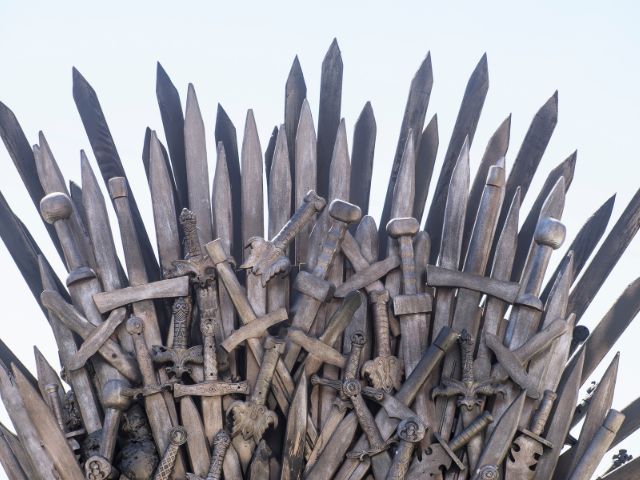
Norse Mythology in Film and Television
Film and television have become potent mediums for the reimagining and retelling of Norse mythology.
From Hollywood blockbusters to popular TV series, the tales of Odin, Thor, Loki, and other Norse gods have found new life and widespread popularity in the 21st century.
Norse Mythology in Video Games
Video games have also embraced Norse mythology, offering immersive experiences that allow players to delve into the rich Norse cosmos.
Titles like “God of War” and “Assassin’s Creed Valhalla” highlight the adaptability of Norse myths, providing new avenues for the exploration and enjoyment of these ancient tales.
Norse Symbols in Contemporary Usage
Norse symbols continue to be used in contemporary culture, often as emblems of strength, courage, and wisdom.
From the Hammer of Thor (Mjölnir) to the Helm of Awe (Ægishjálmr), these symbols serve as enduring reminders of the richness and power of Norse mythology.
Conclusion
Norse mythology, with its complex web of gods, creatures, and myths, offers a fascinating window into the worldview of the ancient Norse people.
Its tales of heroism, trickery, and cosmic drama continue to captivate us, demonstrating the enduring power of myth in shaping our understanding of the world.
As we continue to tell and retell these stories, we keep alive a tradition that has shaped Western culture in countless ways, from literature and art to our collective imagination.
